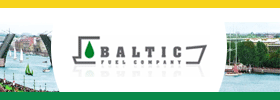Long way down the road
RF Government has expanded the roadmap to improve customs administration with new measures designed to further simplify transit transportation. Experts believe those measures will help attract containerized cargo to domestic ports though not everything required has been done yet.
Perfection knows no limits
RF Government has recently issued a Decree (No 1567-r, dated August 15) to amend the roadmap on Improving Customs Administration.
The roadmap has thus been expanded with 15 new measures specifically focused on improving and optimization of customs operations at air and maritime border checkpoints, customs transit procedures, customs payments and customs refund procedures, easier and faster obtaining of permits for imported/exported goods.
The roadmap also provides for elaboration and approval of a plan on the development of the national segment of the Russian Federation within an Integrated Information System of foreign and mutual trade of the Customs Union through introduction and promotion of single window mechanism in Member States of the Eurasian Economic Union.
“This sphere is full of challenges. We are interested in more simple and expeditious clearance procedures at seaports (this is also the goal of the plan that has been adopted) to see that processing costs do not exceed comparable costs at ports in other countries. Unfortunately, today this is far from the case everywhere. Operating costs and transport tariffs are rising. So we need to reorganise the oversight agencies, above all, the customs service. Transit operations servicing should become more state-of-the-art and convenient, and should include digital declarations. An update of the roadmap was necessary, and so it has been adopted. Decisions on these issues at the government level and the relevant agencies are to be made before the end of the year,” Prime Minister Dmitry Medvedev comments the document.
One of our recent articles covered the obstacles that hinder Russia from taking over the container flow from the foreign ports of the Baltic Sea >>>>
Experts and market players interviewed by IAA PortNews commented on the situation and attributed it, in particular, to tough document requirements of the Baltic Customs, slow customs transit procedures, difference of customs value index applied by different customs.
Measures introduced into the roadmap (most of them are supposed to come into effect in 2015) are designed to at least partially solve those problems.
As Sergei Firsov, head of Customs Division at LCM Group, told IAA port news, amendments introduced into the roadmap are supposed to simplify the customs clearance and facilitate the logistics if treated properly at the site.
“Good ideas are frequently inverted by local authorities and the results are almost worse than before,” the expert says.
According to him, the ability to apply pre-declared transit mechanism will make the life of importers/exporters considerably easier when it comes to clearance at seaports and airports.
“It makes container shipping via Russian seaports more attractive. Another positive aspect is the reduction of time period for licensing of imports/exports, refund of advances and other payments managed by the Federal Customs Service of Russia,” says Sergei Firsov.
Meanwhile the expert believes it would be reasonable to ensure a uniform approach to paperwork for customs clearance throughout the entire territory of the Russian Federation with the same package of documents required at any customs, to reduce the period of time needed for payment of duties and taxes made without plastic cards (it is at least 24 hours today), and to facilitate payment of resources retained due to errors in payment documents upon their correction.
According to the estimates of experts interviewed by IAA PortNews, Russian ports of the Baltic Sea annually lose up to 200,000 TEUs bound for Russia, particularly due to poor customs administration. Those volumes are handled by foreign stevedores and, consequently, go to the budgets of other countries.
Vitaly Chernov






